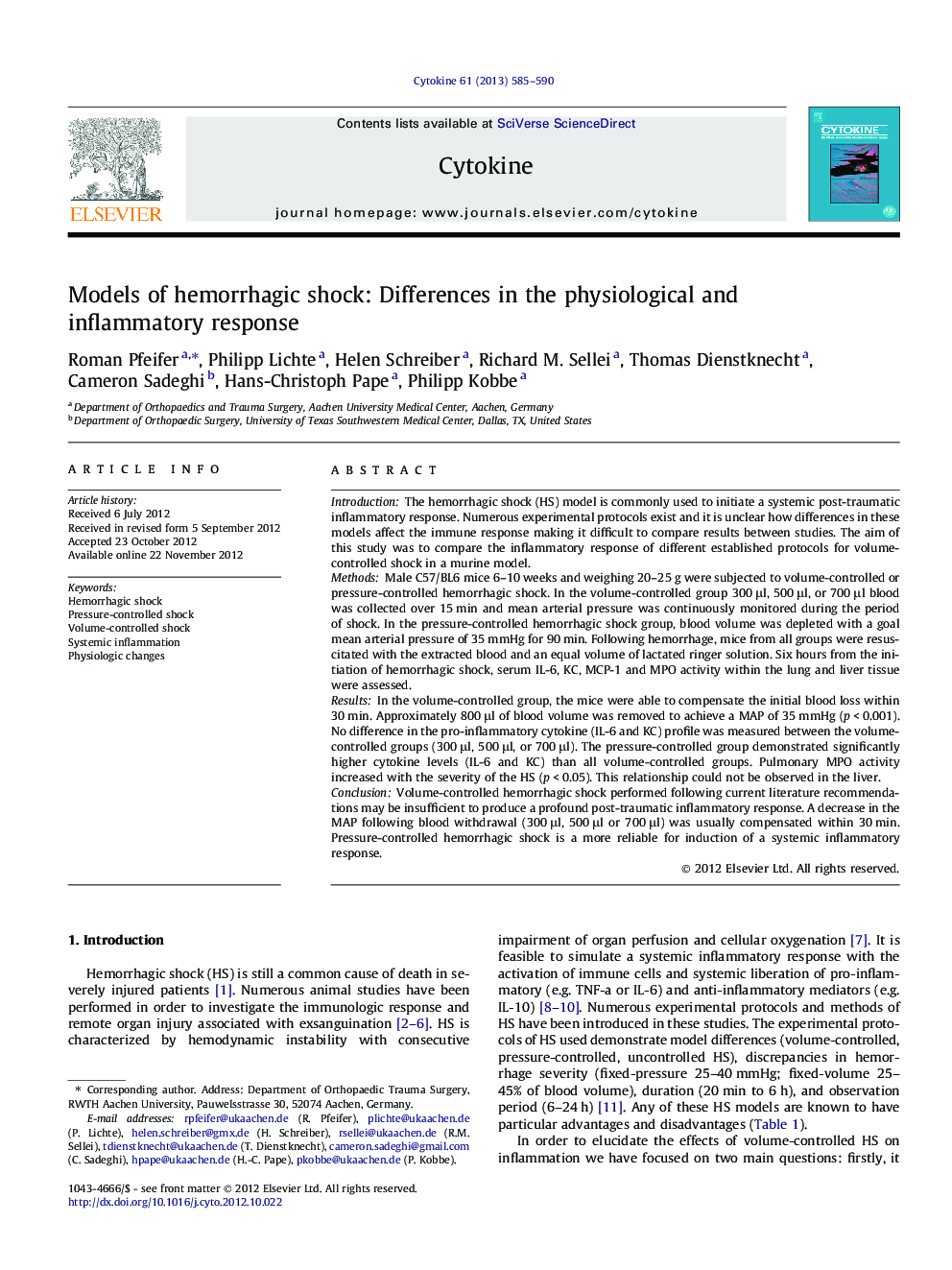| کد مقاله | کد نشریه | سال انتشار | مقاله انگلیسی | نسخه تمام متن |
|---|---|---|---|---|
| 5897261 | 1155264 | 2013 | 6 صفحه PDF | دانلود رایگان |
IntroductionThe hemorrhagic shock (HS) model is commonly used to initiate a systemic post-traumatic inflammatory response. Numerous experimental protocols exist and it is unclear how differences in these models affect the immune response making it difficult to compare results between studies. The aim of this study was to compare the inflammatory response of different established protocols for volume-controlled shock in a murine model.MethodsMale C57/BL6 mice 6-10 weeks and weighing 20-25 g were subjected to volume-controlled or pressure-controlled hemorrhagic shock. In the volume-controlled group 300 μl, 500 μl, or 700 μl blood was collected over 15 min and mean arterial pressure was continuously monitored during the period of shock. In the pressure-controlled hemorrhagic shock group, blood volume was depleted with a goal mean arterial pressure of 35 mmHg for 90 min. Following hemorrhage, mice from all groups were resuscitated with the extracted blood and an equal volume of lactated ringer solution. Six hours from the initiation of hemorrhagic shock, serum IL-6, KC, MCP-1 and MPO activity within the lung and liver tissue were assessed.ResultsIn the volume-controlled group, the mice were able to compensate the initial blood loss within 30 min. Approximately 800 μl of blood volume was removed to achieve a MAP of 35 mmHg (p < 0.001). No difference in the pro-inflammatory cytokine (IL-6 and KC) profile was measured between the volume-controlled groups (300 μl, 500 μl, or 700 μl). The pressure-controlled group demonstrated significantly higher cytokine levels (IL-6 and KC) than all volume-controlled groups. Pulmonary MPO activity increased with the severity of the HS (p < 0.05). This relationship could not be observed in the liver.ConclusionVolume-controlled hemorrhagic shock performed following current literature recommendations may be insufficient to produce a profound post-traumatic inflammatory response. A decrease in the MAP following blood withdrawal (300 μl, 500 μl or 700 μl) was usually compensated within 30 min. Pressure-controlled hemorrhagic shock is a more reliable for induction of a systemic inflammatory response.
⺠Comparison of standardized hemorrhagic shock models. ⺠Continuous measurements of physiologic parameters (e.g. mean arterial pressure). ⺠Comparison of cytokine expression and systemic inflammation after sterile stimulus. ⺠Recommendations for further studies using hemorrhagic shock models.
Journal: Cytokine - Volume 61, Issue 2, February 2013, Pages 585-590
